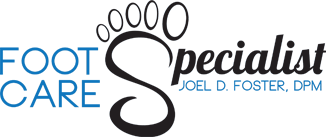Running is one of the best forms of exercise, but the repetitive impact can put a lot of stress on your feet, ankles, and lower legs. Whether you’re training for your first 5K or logging marathon miles, injury prevention should be a top priority. By choosing the right shoes, warming up properly, building strength, and taking care of your feet, you can run stronger and avoid setbacks. Here’s what Kansas City Podiatrist Dr. Joel Foster says every runner should know:
1. Choose Proper Footwear
Wearing properly fitted running shoes is one of the most important steps you can take to protect your feet and ankles. Poorly fitting shoes or those with inadequate support can cause a wide range of issues, from blisters and calluses to plantar fasciitis, shin splints, and stress fractures.
The right running shoes help distribute pressure evenly, improve foot stability, and support healthy biomechanics. Here’s what to look for:
-
Stable Midfoot: Select shoes that don’t bend excessively in the arch area, ensuring better support and reducing strain.
-
Neutral Heel: A firm, structured heel counter holds your heel securely in place, minimizing motion and instability.
-
Check for Uneven Wear: Examine the soles of your shoes. Excessive wear on either the inside or outside edge may indicate poor foot mechanics.
-
Wide Toe Box: Your toes should have room to spread naturally. Aim for about a finger’s width of space between your longest toe and the front of the shoe.
2. Warm Up and Stretch Regularly
A good warm-up and cool-down routine is essential to prevent injuries. Tight muscles and tendons are more prone to strain, while flexible joints and tissues can better absorb impact.
Start each run with dynamic stretches to get blood flowing and prepare your body for activity. Examples include:
-
High knees
-
Heel kicks (dynamic hamstring curls)
-
Leg swings
-
Walking lunges
After your run, switch to static stretches for at least 5–10 minutes, focusing on your calves, hamstrings, quads, hip flexors, Achilles tendon, and plantar fascia.
Two highly effective stretches include:
-
Wall Stretch:
-
Stand facing a wall with your hands braced against it.
-
Step one foot back, keeping the heel flat on the ground.
-
Lean forward into the wall to stretch your back calf.
-
Hold for 15–20 seconds; repeat several times throughout the day.
-
-
Towel Stretch:
-
Sit on the floor with your legs extended.
-
Loop a towel around the ball of your foot and gently pull the forefoot towards you.
-
Hold for 15–20 seconds; repeat often for best results.
-
3. Build Strength and Stability
Strong muscles and stable joints are key to injury prevention. When your feet, ankles, and legs are well-supported, your body can better absorb the repetitive impact of running.
-
Ankle Strengthening: Use resistance bands or perform single-leg balance drills to strengthen stabilizing muscles.
-
Leg and Hip Strengthening: Add calf raises, squats, lunges, and hip exercises to support your stride and reduce strain.
-
Core Training: A strong core improves posture, reducing stress on your feet and legs over long runs.
4. Consider Custom or Heat-Molded Orthotics
If you have flat feet, high arches, or other structural issues, orthotics can make a big difference in comfort, performance, and injury prevention.
-
Custom Orthotics: These are designed specifically for your feet and running mechanics, offering precise support and alignment. They can help reduce the risk of conditions like plantar fasciitis, shin splints, and stress fractures. These custom calibrated orthotics are available at our office for only $375.
-
Heat-Molded Orthotics: Instead of buying generic inserts at a pharmacy that may not help, visit our office for a custom fit. For just $60, we can heat-mold orthotics to your feet for better support—ready the same day.
5. Regular Foot Care
Healthy feet are essential for consistent training. A few daily habits can prevent small issues from turning into painful problems:
-
Keep Nails Trimmed: Cut nails straight across to avoid ingrown toenails, which can lead to infection.
-
Moisturize Daily: Runners’ feet are prone to dryness and cracking due to friction and environmental exposure. Dr. Joel Foster recommends a 42% urea cream for deep hydration. Urea draws moisture into the skin and acts as a gentle exfoliant to smooth rough patches.
-
Use Occlusive Socks: Dr. Joel Foster also recommends pairing urea cream with beeswax-infused socks to lock in moisture and create a soothing, healing environment for cracked heels and dry skin.
-
Treat Calluses and Blisters Promptly: Thick calluses or untreated blisters can alter your stride and cause pain. Keep them managed to avoid bigger issues.
The Bottom Line:
Injury prevention is about consistency. The right shoes, stretching, strengthening, surface variety, and good foot care can help you stay healthy and keep running strong. If you’re dealing with pain or recurring injuries, a podiatrist can assess your biomechanics, recommend the right gear, and provide personalized solutions to keep you running safely.
